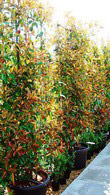Hydrangea Petiolaris
1. Add items to basket
2. Go to the basket
3. Enter your postcode in Delivery Price Check
Pot size: 3 Litres
Plant ID: 16053 91
Plant shape: 3 canes
Pot size: 10 Litres
Plant ID: 949 12
View plant size:Plant shape: Trellis
Pot size: 20 Litres
Plant ID: 1561 15
View plant size:Plant variety: Special Offer / Limited Stock
Pot size: 20 Litres
Plant ID: 12135 C 42
View plant size:LIMITED STOCK only 5 available
- then no more stock of this size
Plant shape: 3 bambo cane
Pot size: 20 Litres
Plant ID: 6267 C 12
View plant size:Plant shape: 3 canes
Pot size: 20 Litres
Plant ID: 6271 2
View plant size:Plant shape: Bush
Pot size: 3 Litres
Plant ID: 14022 1
View plant size:

Hydrangea Petiolaris known commonly as the Climbing Hydrangea this lovely shrub is a deciduous climbing Hydrangea vine plant. It produces large showy white flowers in early to late summer. Once established, Hydrangea Petiolaris is a very attractive climber and very usefully this is one of the few plants which happily grows against a north facing wall. These plants like to have moist soil - so it is good to use an annual mulch in winter, to feed and to keep the moisture in during warmer weather.
See also Hydrangea Petiolaris Miranda.
This low maintenance, useful climbing hydrangea will thrive in shadier locations of the landscape. They are slow to establish, but your patience will definitely pay off. The flowers can grow to 25 centimetres across, potentially covering the stems entirely making for a very showy appearance. Climbing Hydrangea is a solid climber, with the craggy stems it is known for sprouting roots that are continuously looking for any advantage to cling to walls, trellises or structures where you plant it.
Hydrangea Petiolaris is hardy to H5 in the UK and Ireland, making it one of the more hardy of the Genus. Hydrangea originate from Japan and South Korea. They prefer somewhat shady Aspects, but will persist in full sun, but the flowers will fade somewhat faster in a sunny location. They prefer to be planted in more sheltered positions.
The ideal soil for the Climbing Hydrangea is somewhat well drained, with good moisture holding capacity, but good internal drainage as well. Its favourite soil textures are loamy, clay, and sand; as long as they are not prone to being waterlogged. The pH of the soil should be neutral or slightly acid. You’ll find they really respond to soil enriched with well-rotted compost and other sources of organic matter.
This slow growing Climbing Hydrangea Petiolaris will develop to a height greater than 12 metres and an ultimate spread of between 4-8 metres in the 10-20 years of development to full growth.
Choose sites along northern, southern, eastern or western aspects and amend your well drained soil with plenty of well matured compost. Place along wall borders, in your city or courtyard gardens, or as an informal garden selection. With some patience and a sturdy structure to support it, this recipient of the Royal Horticultural Society Award of Garden Merit will be sure to please. You may be interested in our extended Climbers Collection.


















